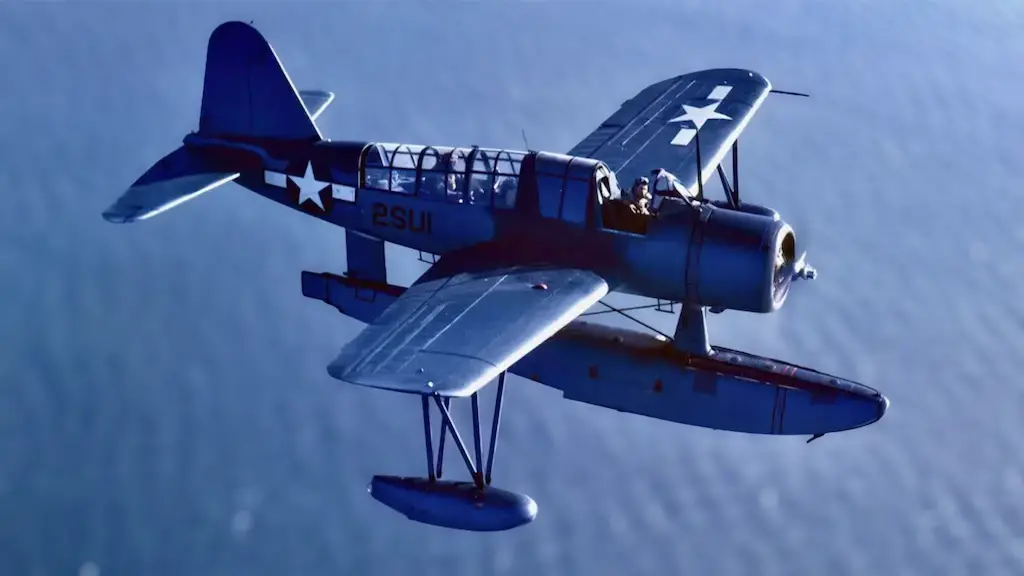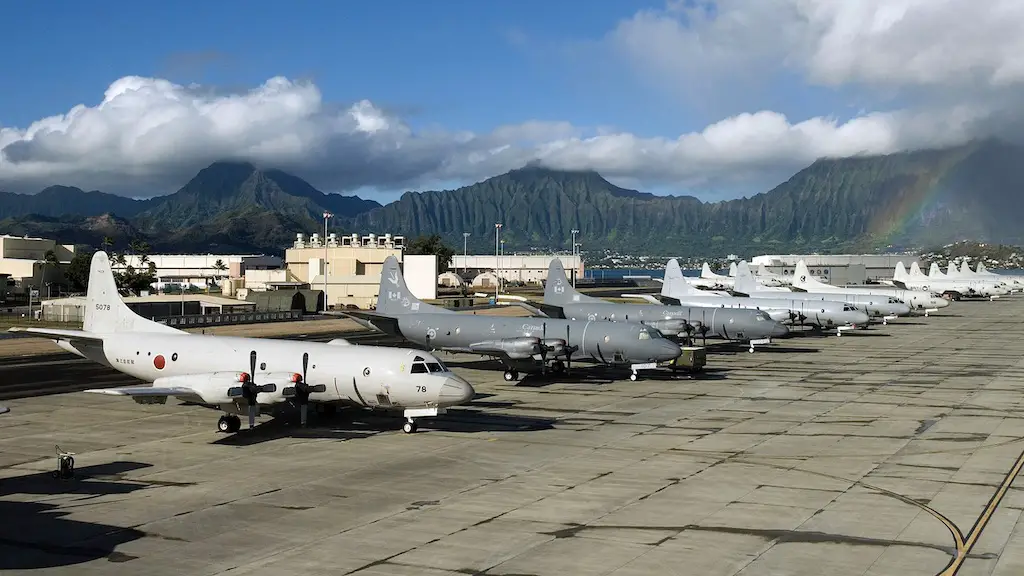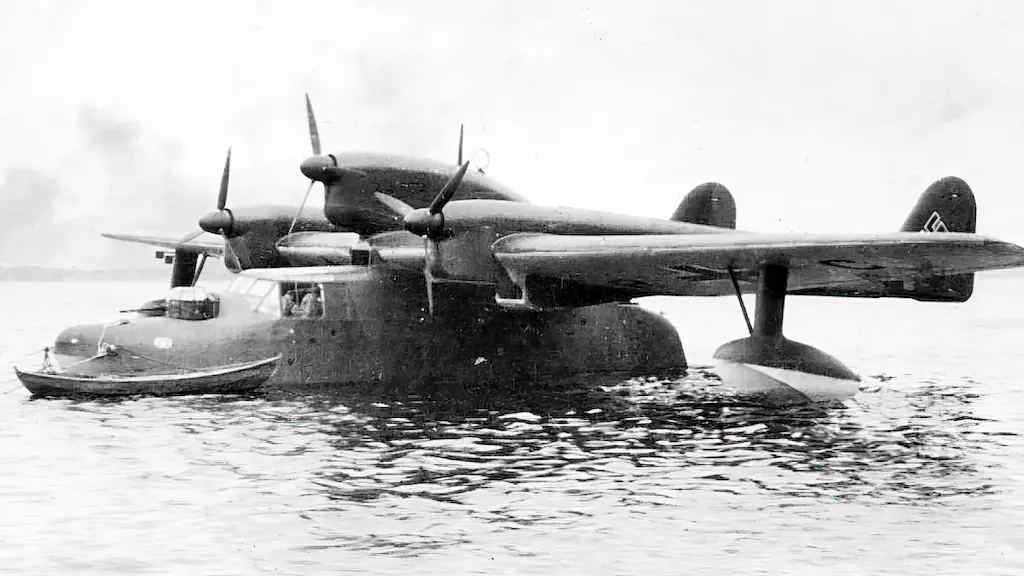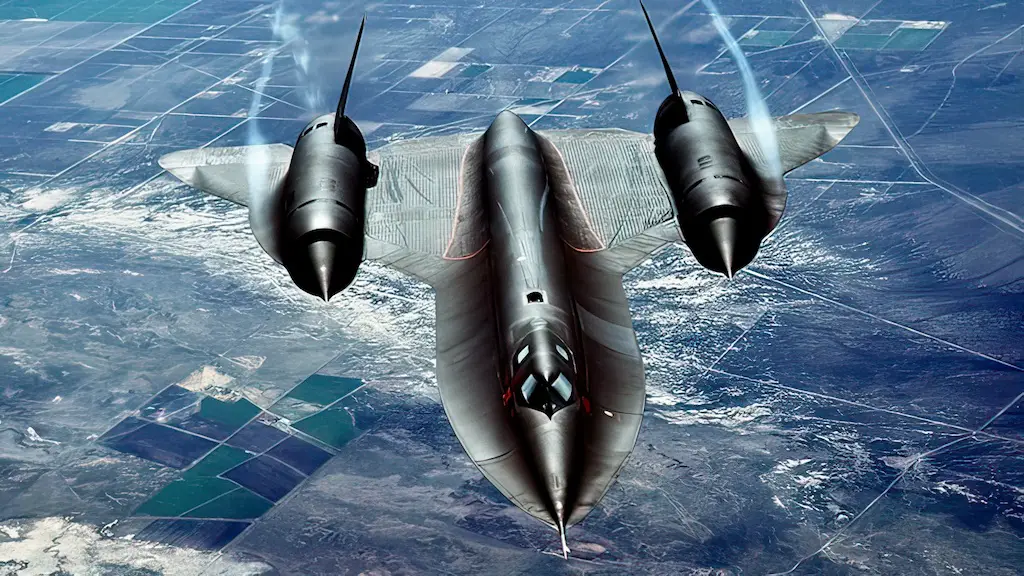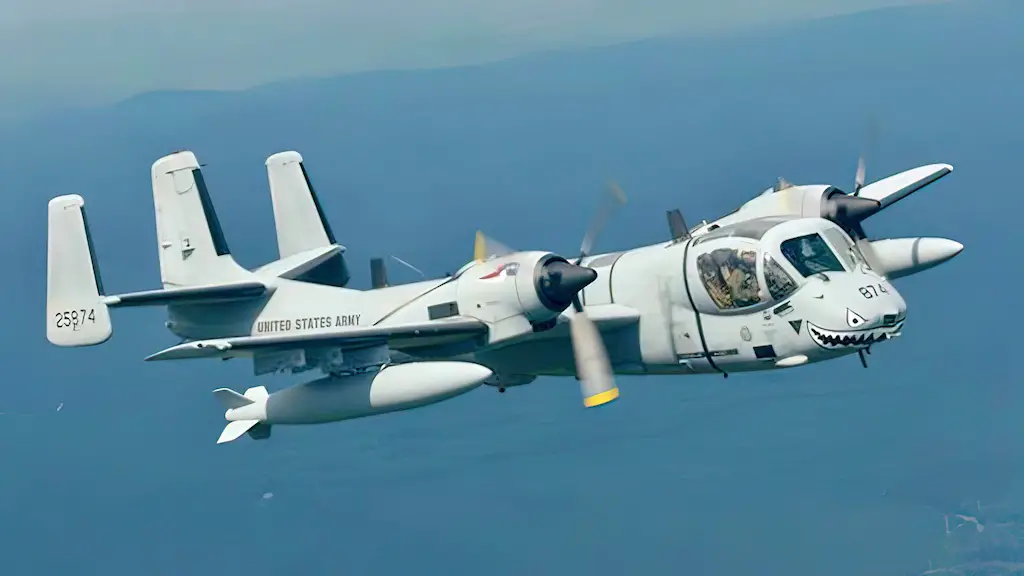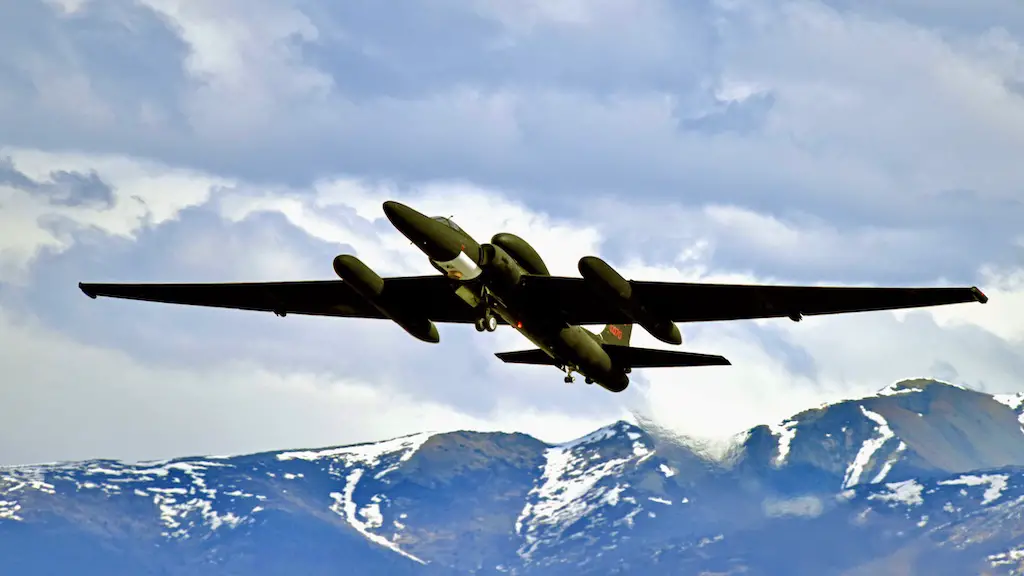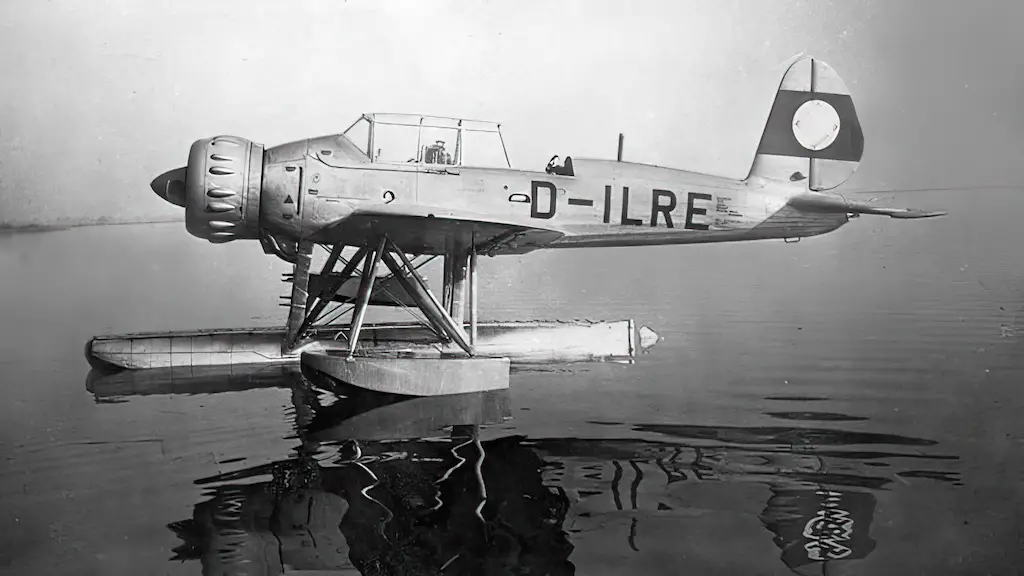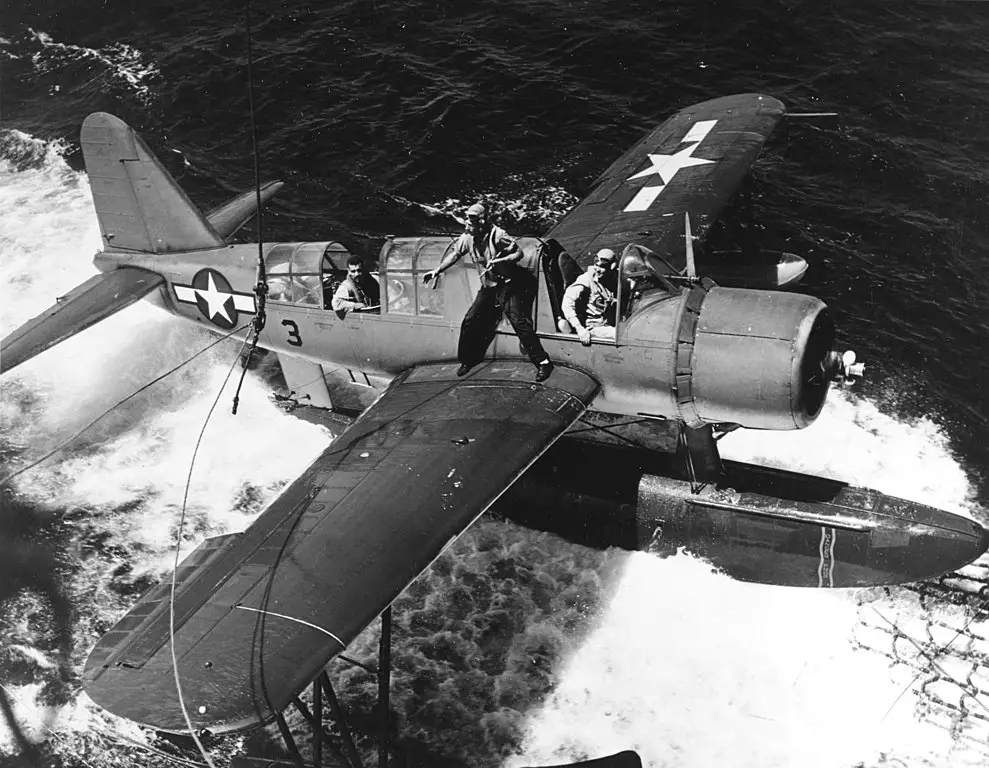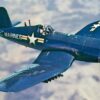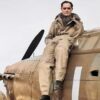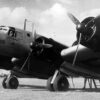Development History
The Kingfisher was designed by Vought-Sikorsky Aircraft after a US Navy requirement for a two-seat scout observation aircraft. It needed to be able to operate from both land and sea. Rex B. Beisel led the design team producing an aircraft with a steel-tube fuselage and fabric-covered wings. It was initially powered by an air-cooled, 450 hp Pratt & Whitney R-985-4 Wasp Junior radial engine.
Beisel also introduced high-lift devices, spoilers and in a unique arrangement. Deflector plate flaps and drooping ailerons located on the trailing edge of the wing were deployed to increase the camber of the wing and thus create additional lift. The XO2U-1 prototype took its first flight in 1938 and underwent testing by the US Navy in a series of trials. The Navy was impressed with the Kingfisher’s performance, and production began in 1940 with the delivery of the first model, the OS2U-1. Several variants followed, including the OS2U-2, OS2U-3, OS2U-4, and OS2N-1.
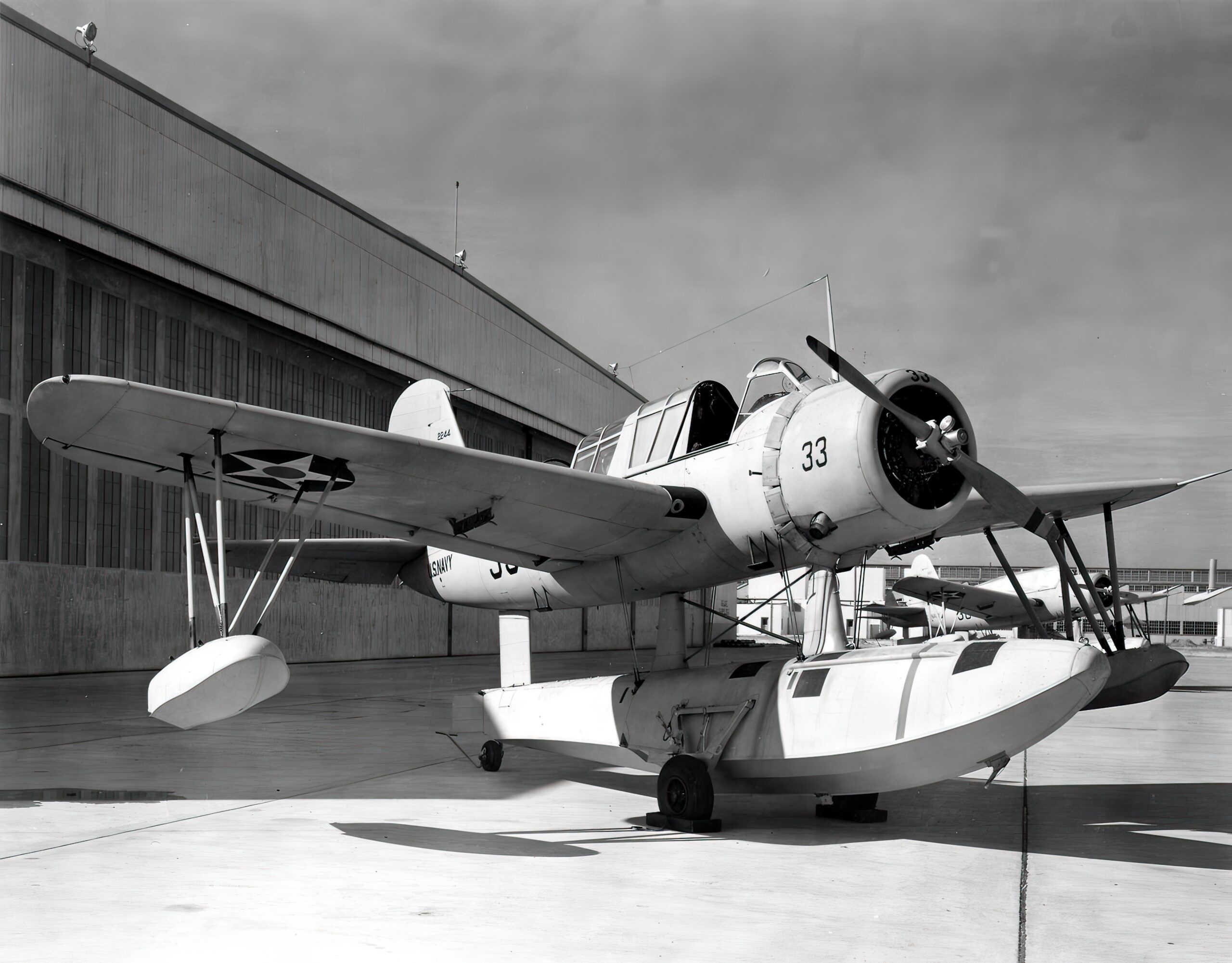
Versatility and Durability
The Vought OS2U Kingfisher was truly a remarkable aircraft, crafted for its unparalleled versatility and durability. It could perform an array of tasks that ranged from reconnaissance and observation to rescue missions and even light bombing. Its toughness was a key asset and was perfectly suited for harsh weather and challenging landings that came with naval operations.
The Kingfisher was a jack-of-all-trades. It possessed the remarkable ability to operate from both land and sea, thanks to its interchangeable twin floats. The OS2U could also operate on fixed, wheeled, taildragger landing gear. This characteristic alone made it an invaluable asset in naval operations, granting the ability to land on water when traditional runways were not an option.
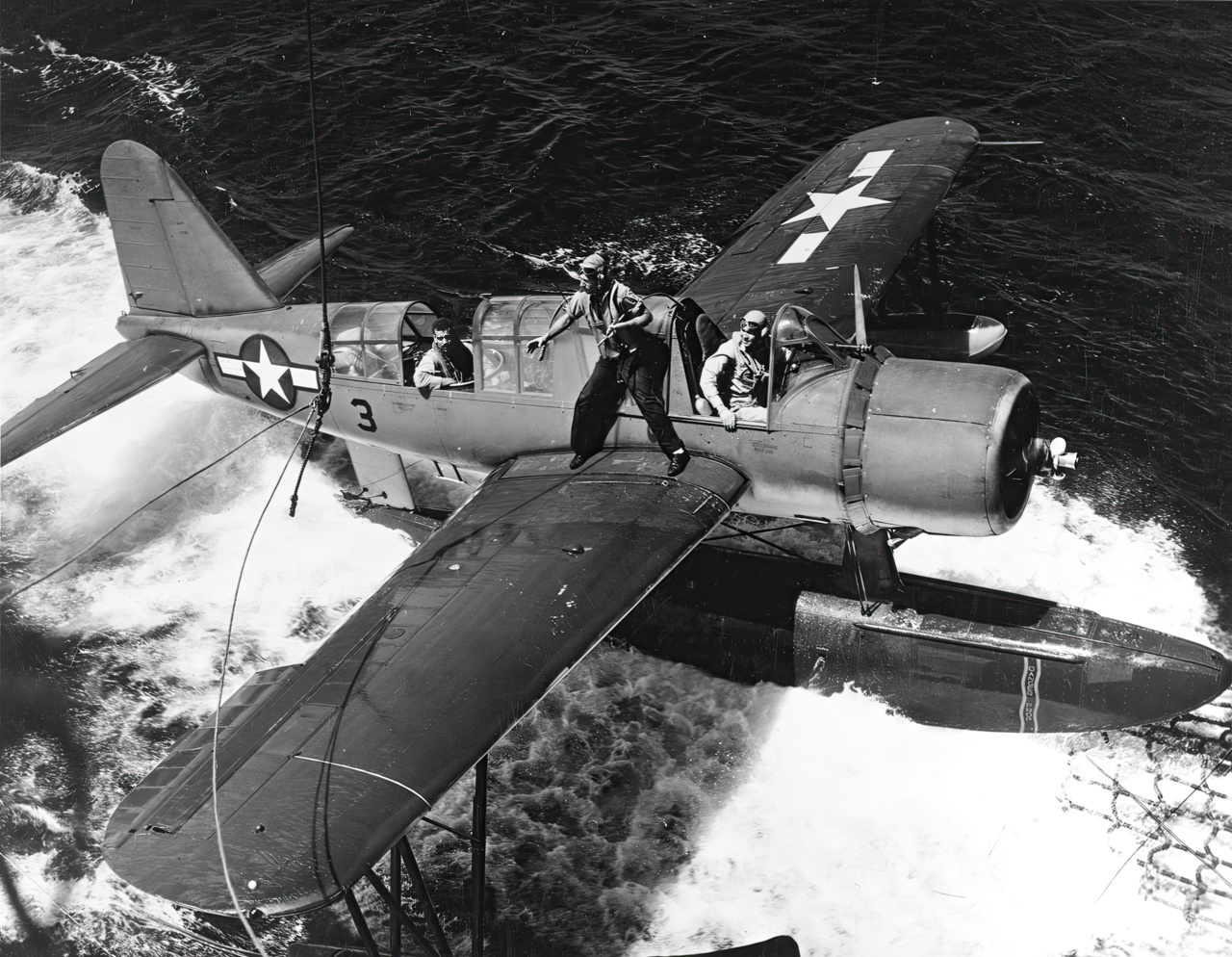
Combat Missions
For combat missions, the pilot had a .30-caliber Browning M1919 machine gun, the receiver mounted low in the right front cockpit, firing between the engine cylinder heads, while the radio operator/gunner manned another .30-caliber machine gun (or a pair) on a flexible Scarff ring mount. The aircraft could also carry two 100 lb bombs or two 325 lb depth charges.
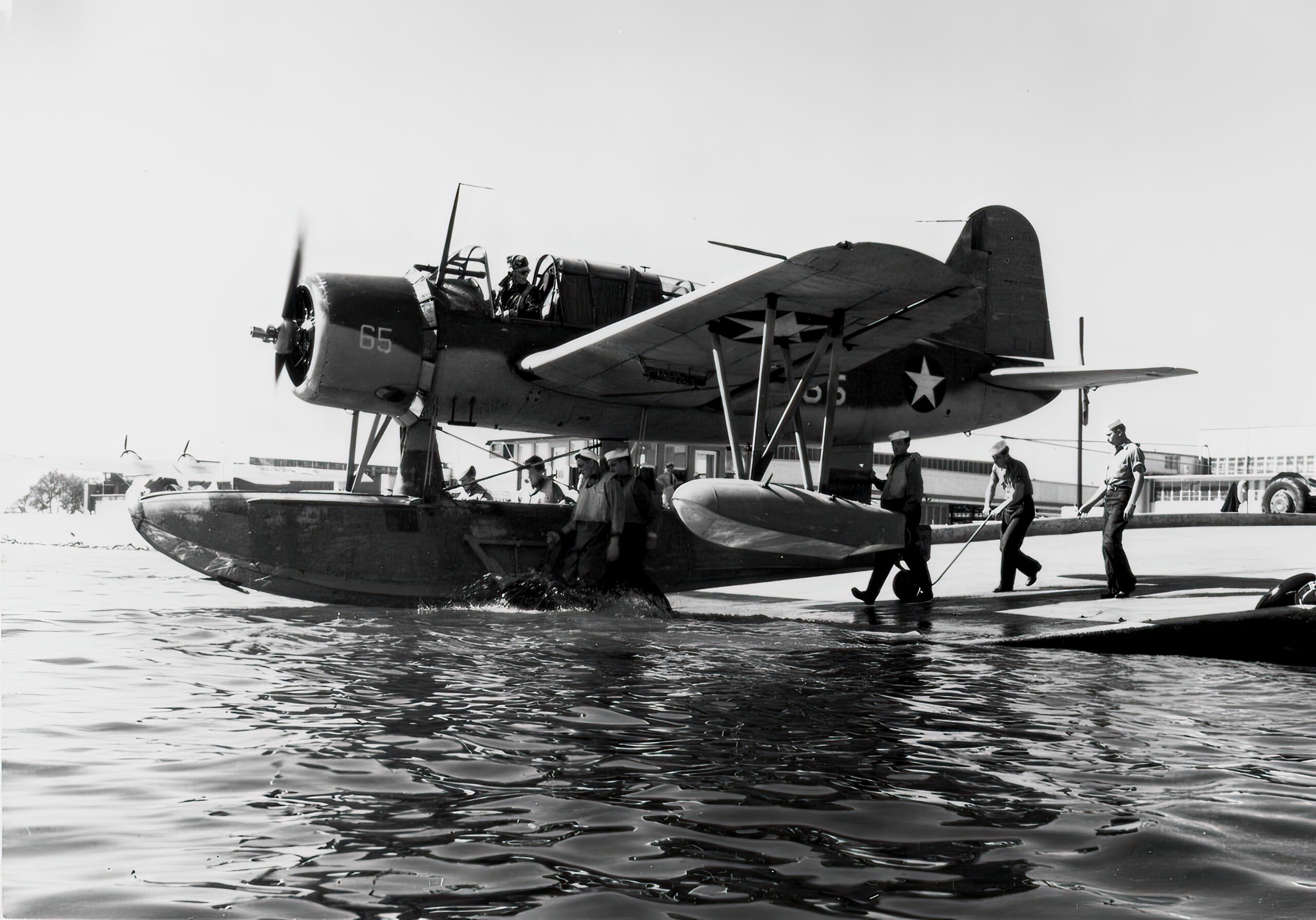
Active service
Incredibly, despite being introduced way back in the early 1940s, the Kingfisher remained in active service for many years. This was with the U.S. Navy and other countries around the world. This longevity was a testament to its exceptional design and unparalleled usefulness in the field. The Kingfisher’s range of capabilities, durability in harsh conditions, and capacity for operating as a floatplane truly made it a one-of-a-kind aircraft that made an indelible mark on military operations for many years to come.
Multi mission
During World War II, the Kingfisher was more than just an observation and reconnaissance aircraft. It served as a rescue plane, dropping liferafts and supplies to downed airmen and sailors. It also served as a light bomber, carrying small bombs and depth charges. Even after the war, the Kingfisher kept its place in various roles, from search and rescue to target towing and training. It’s amazing to think that this biplane played such an important part in history, isn’t it?
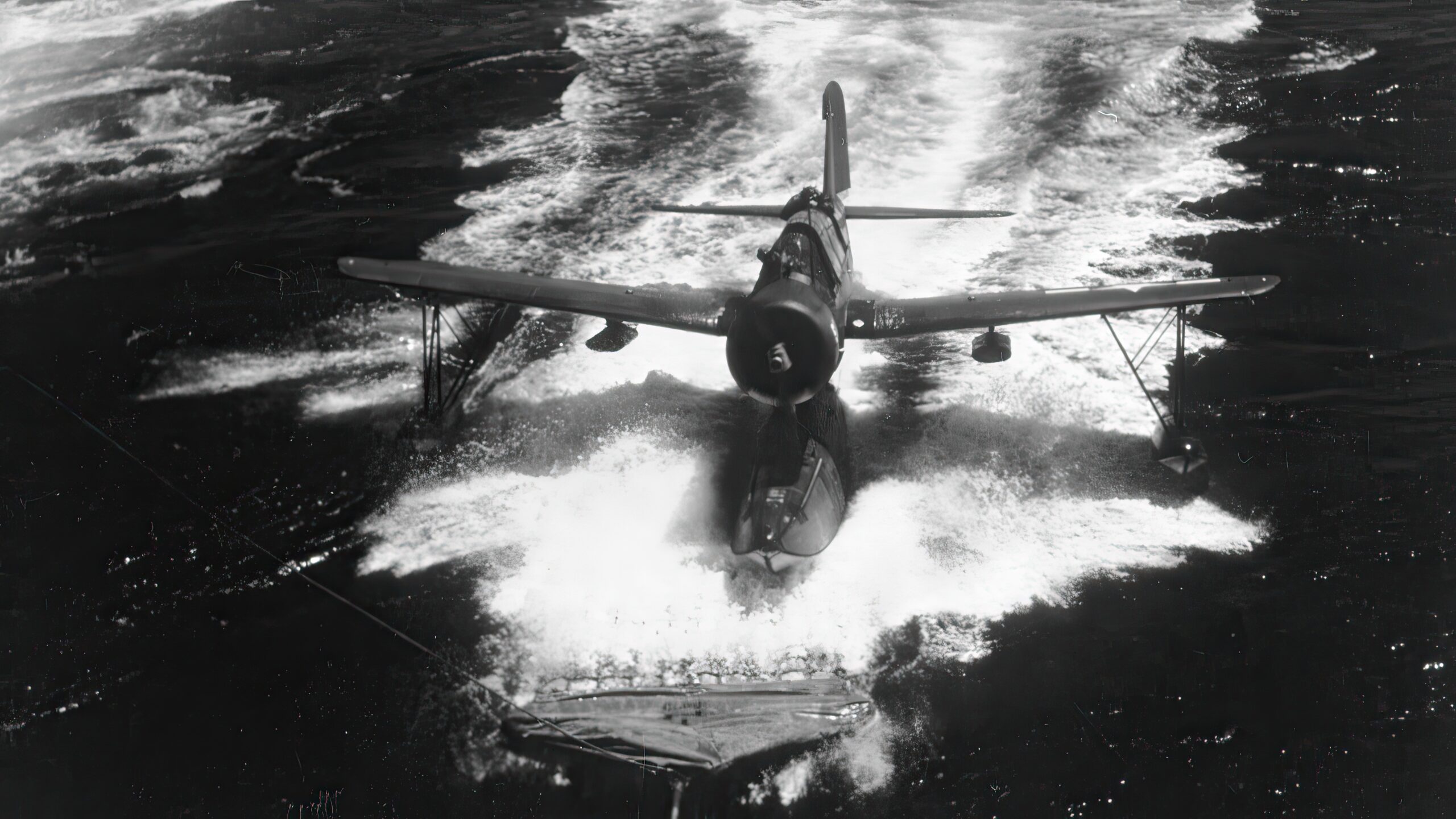
The Kingfisher during Midway
The Kingfisher played a crucial role during the Battle of Midway. It was utilized by US Navy pilots to track down the Japanese carrier fleet, who were preparing to launch an attack on American forces stationed at Midway Atoll. Ensign Frank O’Flaherty and radioman/gunner Alvin Kernan were flying the Kingfisher aircraft when they spotted the Japanese carrier force and quickly relayed the information back to the US fleet. This intel proved to be pivotal in enabling US aircraft carriers to launch a surprise attack and sink four Japanese carriers, resulting in a significant victory for the US Navy.
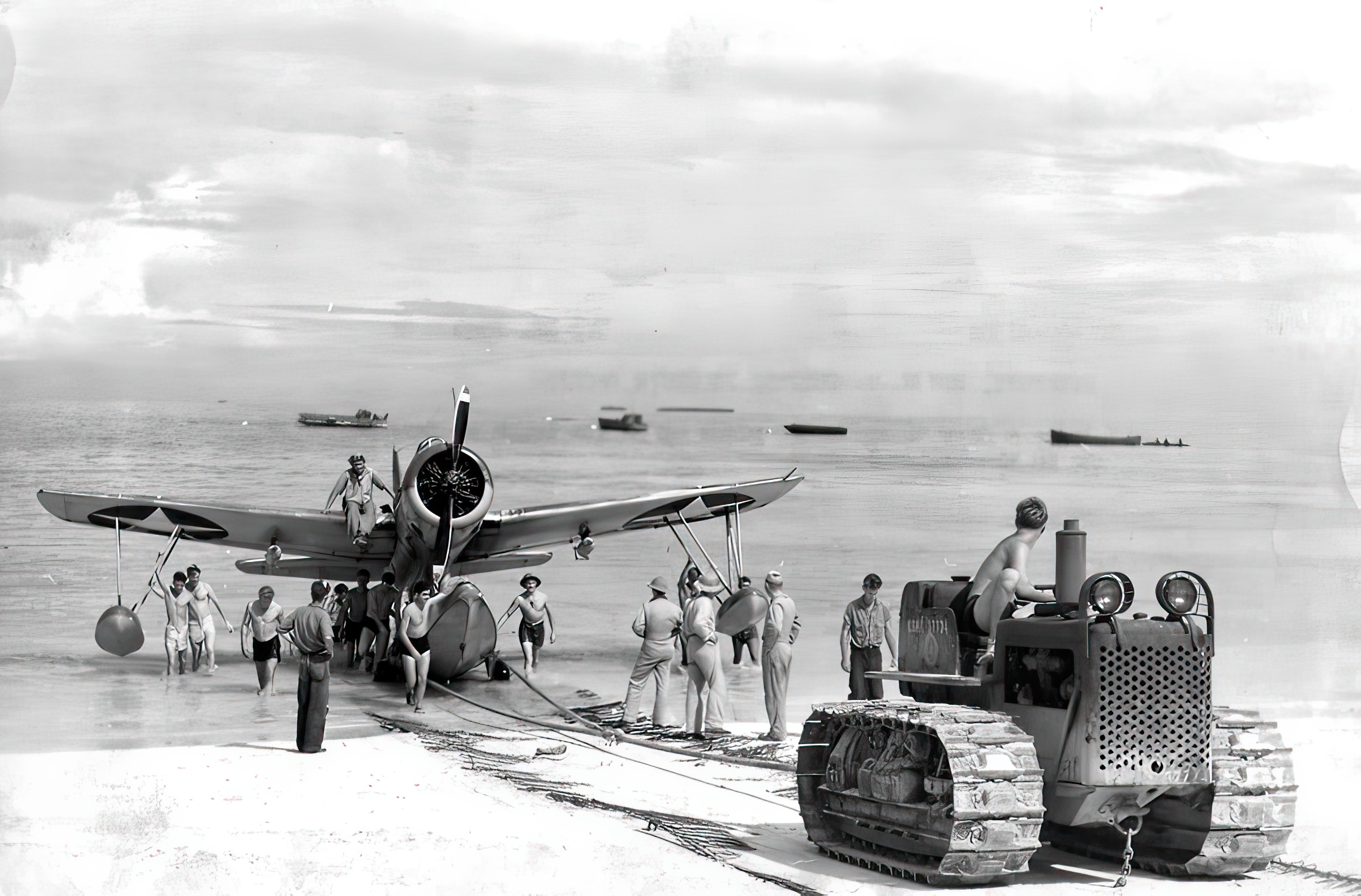
Despite being damaged by enemy fire, O’Flaherty and Kernan’s Kingfisher was later recovered by a US Navy submarine and returned to active duty. The aircraft’s success in locating the Japanese fleet at Midway solidified its reputation as a reliable and valuable asset in Naval operations. Such bravery and quick thinking in the face of danger exemplify the importance of the Kingfisher and its impact in the Battle of Midway.
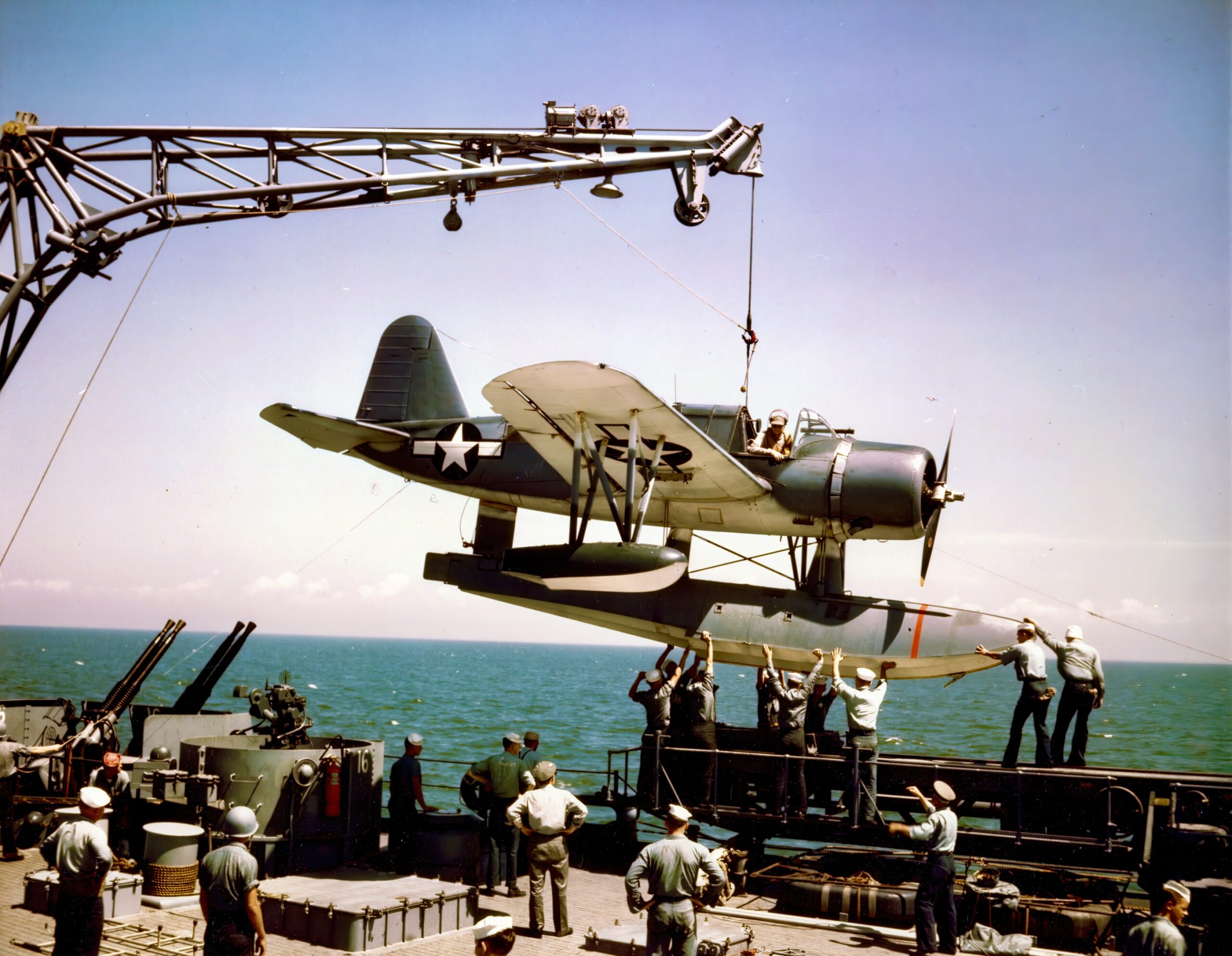
Retirement
The Vought OS2U Kingfisher served in the US Navy until the late 1940s and early 1950s. It was replaced by newer planes that boasted jet engines, greater range, and faster speeds. Despite being retired, the Kingfisher continued to be used by other countries, including Argentina and Brazil.
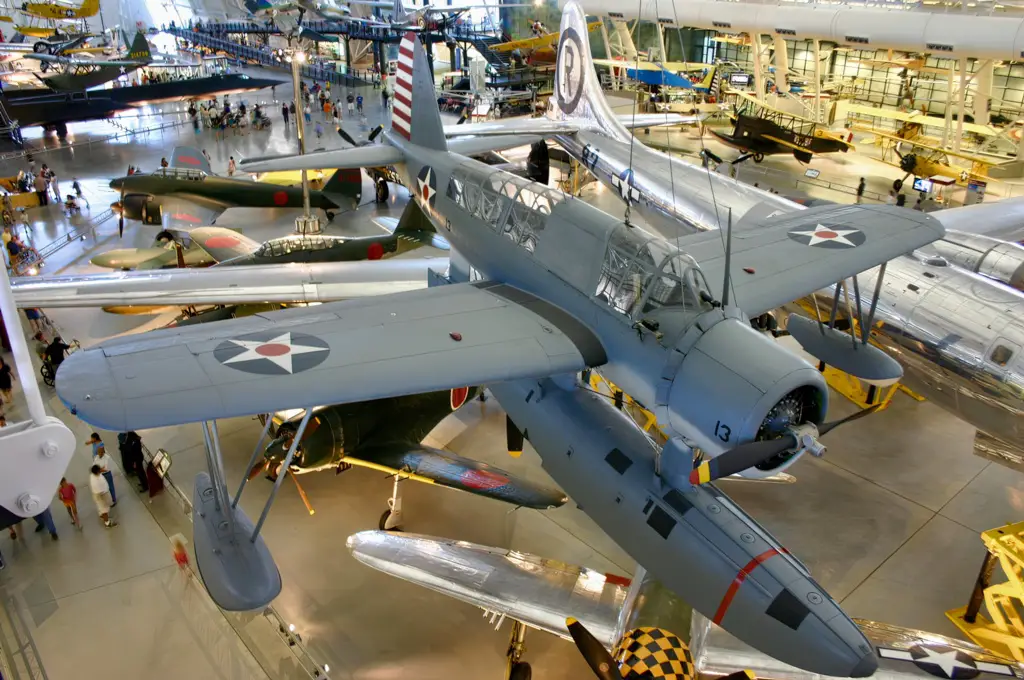
Enduring legacy
Nowadays, the Kingfisher is scarce and is mainly remembered for its contribution to naval aviation history. It’s a symbol of bravery and ingenuity, representing the pilots and crews who flew it in service to their countries. Despite retiring over 60 years ago, the Kingfisher’s legacy endures.

